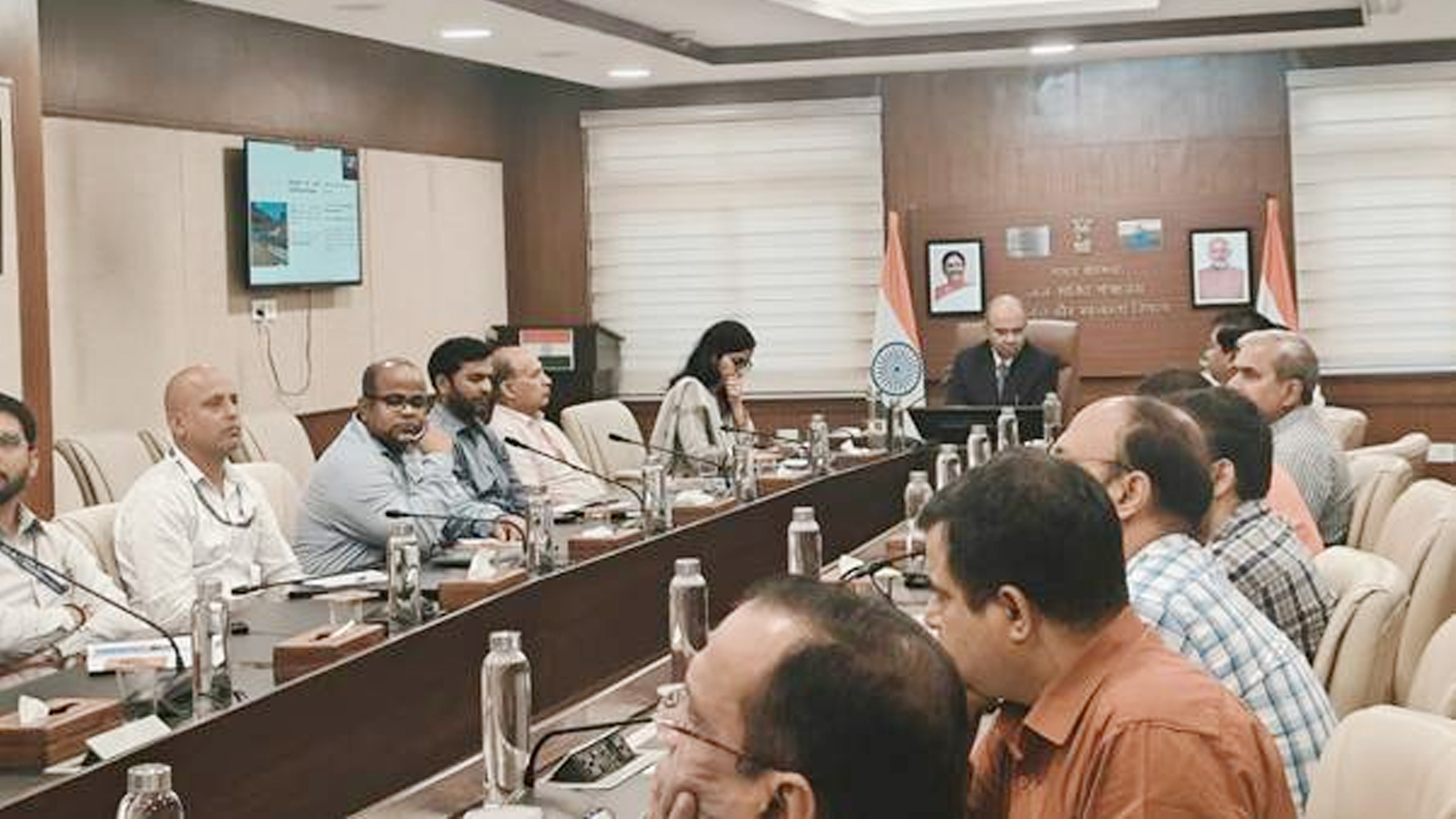The Department of Drinking Water and Sanitation (DDWS), Ministry of Jal Shakti, on Tuesday convened the first District Collectors’ Peyjal Samvad – a national dialogue aimed at strengthening district-led governance, promoting innovation, and enhancing sustainability under the Jal Jeevan Mission (JJM). The event comes at a crucial juncture as the Mission has achieved a significant milestone of providing tap water access to over 15.71 crore (81.17%) rural households across India.
The virtual event was chaired by Ashok K. K. Meena, Secretary, DDWS, in the presence of Kamal Kishore Soan, Additional Secretary & Mission Director, National Jal Jeevan Mission (NJJM); Swati Meena Naik, Joint Secretary, NJJM; senior officials; District Collectors/District Magistrates; Mission Directors; and State Mission teams from States and Union Territories.
In his keynote address, Ashok K. K. Meena emphasised that JJM, having crossed 81% rural household coverage, is now entering a new phase focused on long-term sustainability, institutional consolidation, and accountability.
“Every district has its own remarkable solutions and innovations shaped by local realities. The District Collectors’ Peyjal Samvad is an opportunity to identify scalable and replicable models that can inspire cross-learning and guide policy improvements across States,” he said.
He highlighted the pivotal role of District Collectors as the bridge between policy and people, ensuring reliable and sustainable water supply at the grassroots.
District Collectors from East Khasi Hills (Meghalaya), Ganjam (Odisha), Ratnagiri (Maharashtra), Charaideo (Assam), Dhamtari (Chhattisgarh) and North Tripura (Tripura) showcased best practices, including source protection through catchment plantations, SHG-led maintenance, user charge collection, group water supply models, and tech-enabled grievance redressal systems.
Swati Meena Naik, Joint Secretary, NJJM, presented the Mission’s next-phase digital roadmap, highlighting the Rural Piped Water Supply Scheme ID Module (RPWSS ID) as a core element of JJM’s digital public infrastructure.
The RPWSS ID assigns a unique digital identity to every rural water supply scheme, enabling real-time tracking, predictive maintenance, and transparent monitoring. Integrated with PM Gati Shakti, the module supports spatial planning, data-driven decisions, and convergence with other development programmes.
For District Administrations, the system will enable performance tracking of Gram Panchayats, enhance coordination, and optimise resources. For Gram Panchayats, it will provide geo-referenced layouts, asset data, and tools for preventive maintenance. For citizens, the platform will offer transparency through pipeline maps, real-time water quality data, and grievance redressal mechanisms.
“District Collectors and DWSMs are central to this effort. By linking every scheme digitally and fostering participatory monitoring, we can ensure efficient, accountable, and citizen-responsive service delivery,” Naik said.
In his concluding remarks, Kamal Kishore Soan underlined that JJM has evolved from an infrastructure-focused programme to a movement of governance reform and decentralisation.
He stressed the need for robust regulatory frameworks to complement community-led initiatives, including protection of rural water infrastructure and source preservation. He announced that the District Collectors’ Peyjal Samvad will be institutionalised as a regular national platform for peer learning, innovation exchange, and collaborative problem-solving.
“जल बचेगा, तो जल रहेगा और अगर जल रहेगा तो जल मिलेगा।” (“If we save water, it will endure — and only if it endures, will it be available to us”), he said, reaffirming the Mission’s core philosophy.
As the Mission transitions from infrastructure delivery to sustained service provision, the Peyjal Samvad marks a critical step in building a governance model anchored in strong local institutions, digital transparency, and community ownership.
The DDWS reiterated that achieving Har Ghar Jal is not the culmination but the beginning of a new era of sustainable, accountable, and citizen-driven rural water governance—ensuring that every village in India becomes a model of resilience and shared custodianship.










